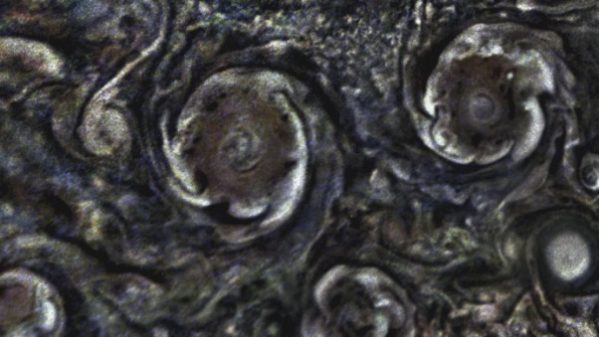
Jupiter’s north pole is a swirling mass of cyclones, and their mesmerizing dance was recently captured in astonishing detail in images from JunoCam, the visible light camera/telescope on NASA’s Juno orbiter.
The Juno mission, launched on Aug. 5, 2011, has been collecting data on Jupiter since 2016. Juno recently completed its 29th orbit of the gas giant, and its scientific instruments are revealing clues about Jupiter’s cyclone clusters.
They are also providing a glimpse into atmospheric zones that are warmer and drier than surrounding areas. These atmospheric hot spots fuel discharges of electricity and shape the formation of “mushballs” — slushy hailstones made of ammonia and water at high altitudes, Juno scientists said on Dec. 11 at the annual meeting of the American Geophysical Union (AGU). The researchers presented Juno’s latest findings at the conference, held virtually this year.


